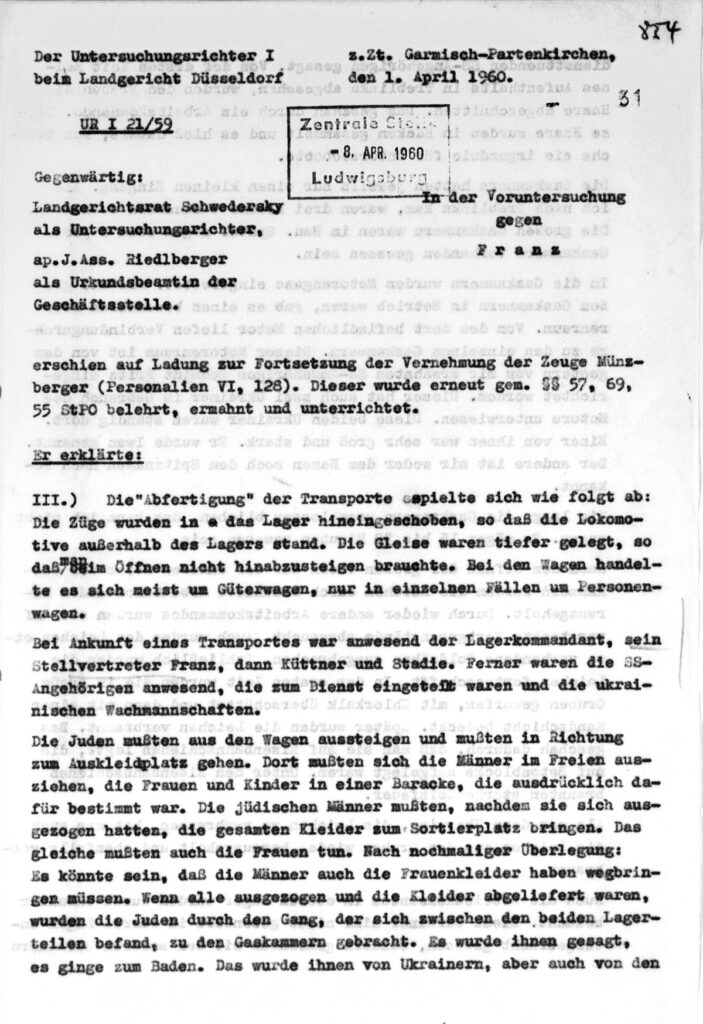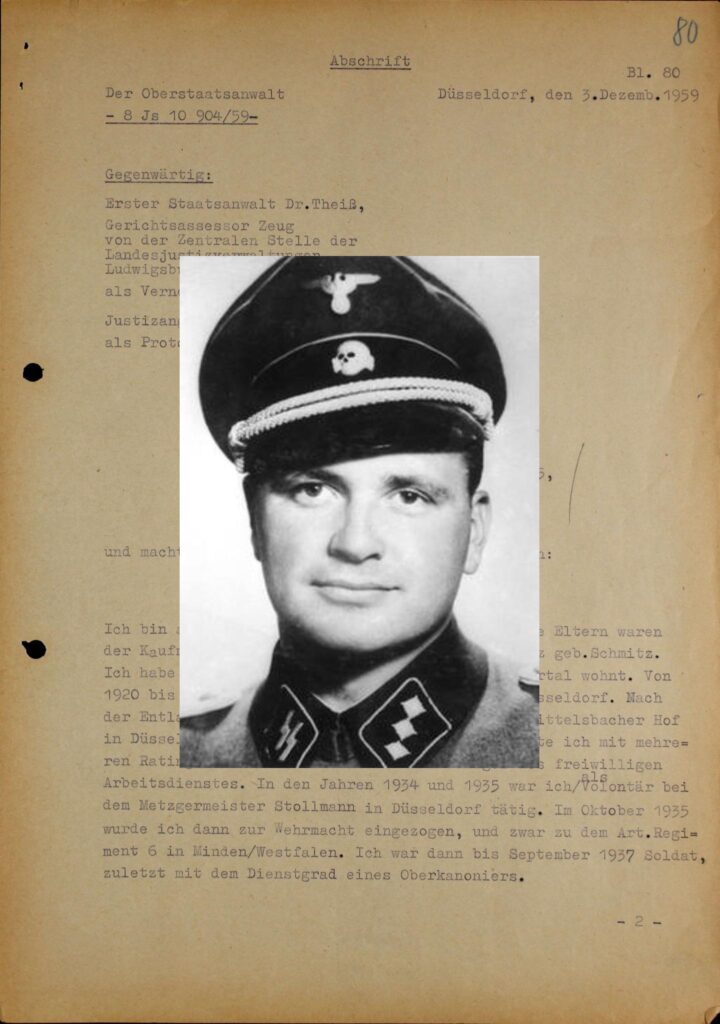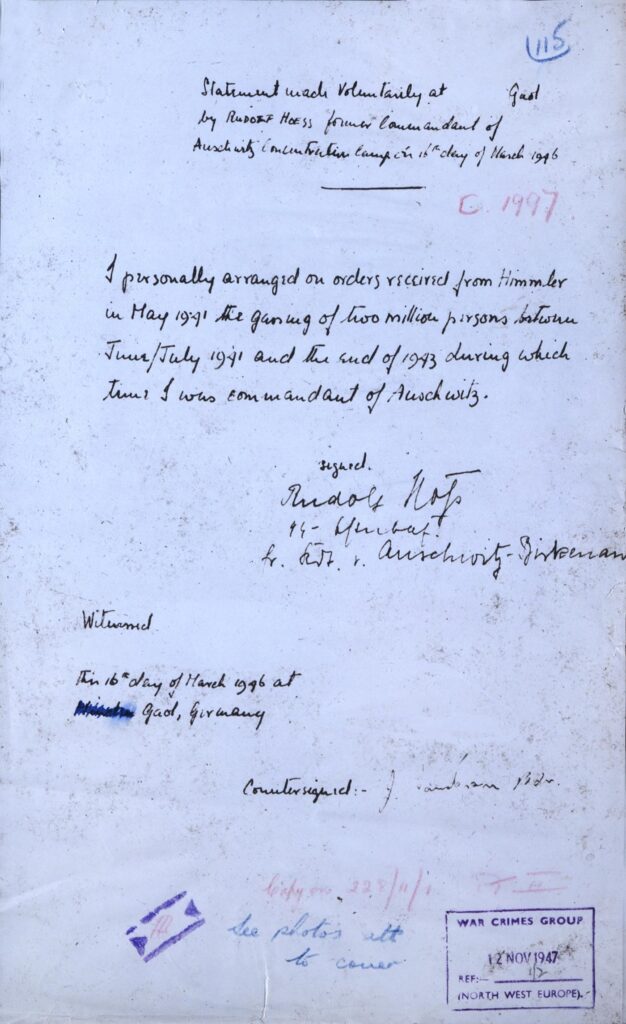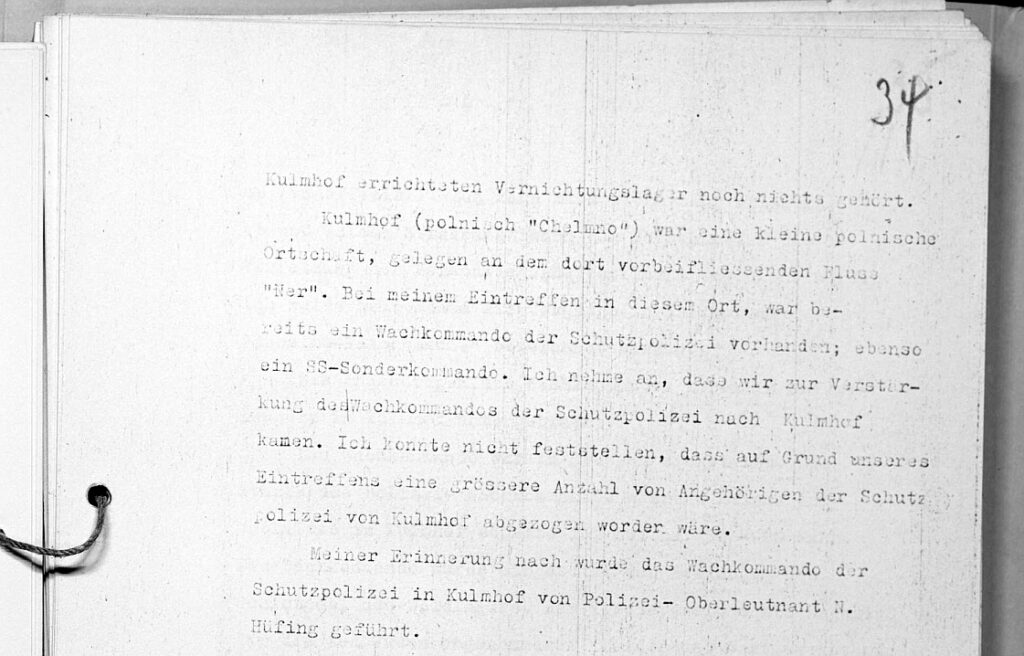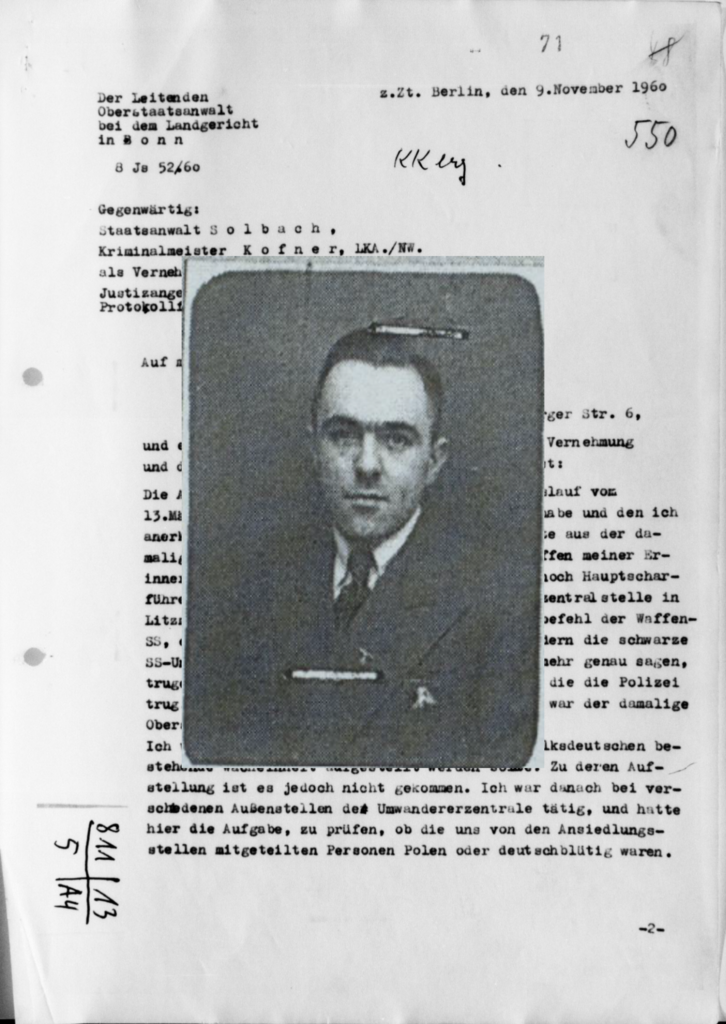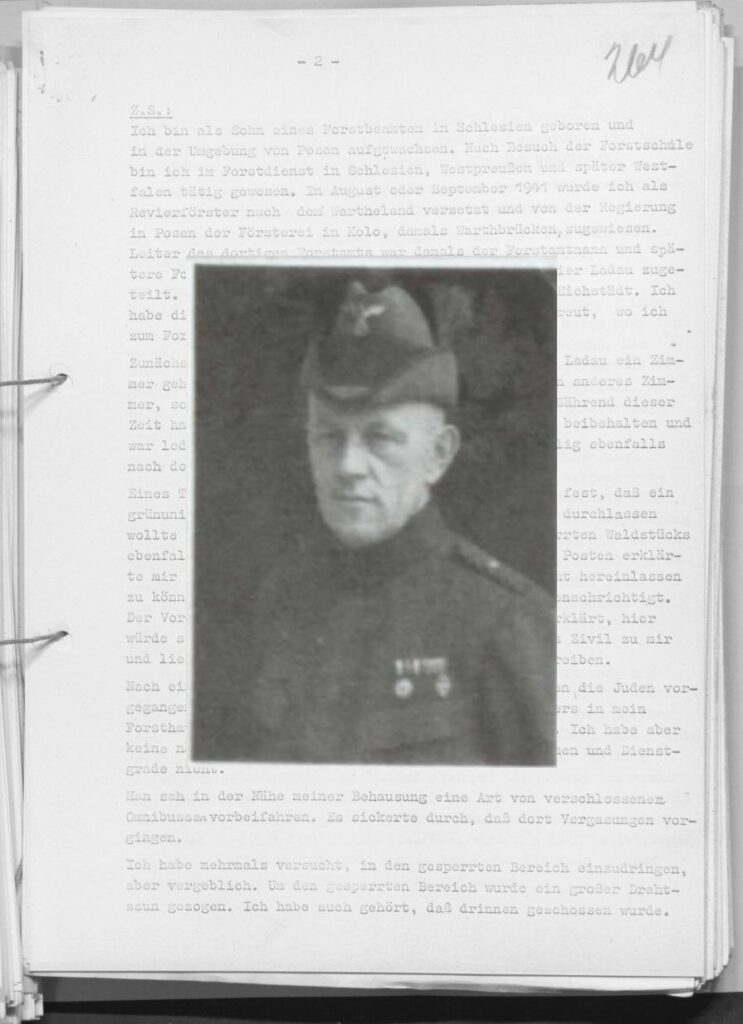1961-01-24 / Testimony of SS Officer Georg Michalsen On the 1942 Warsaw Ghetto Clearing
On January 24, 1961, West German prosecutors interrogated Georg Michalsen, a former SS officer involved in Ghetto liquidations in the Generalgouvernement. In his testimony, Michalsen stated that he was deployed alongside Hermann Höfle as part of the so-called “resettlement staff” tasked with overseeing the clearing of the Warsaw Ghetto in the summer of 1942. He describes how Jews were rounded up, concentrated at the Umschlagplatz, and sent by train to their deaths. Though he claims he did not know the deportees were being killed “at the beginning,” he admits that he soon “found out during the operation”. He further stated that”other members of our unit and those involved in the resettlement also eventually learned what the real fate of the Jews was”.

